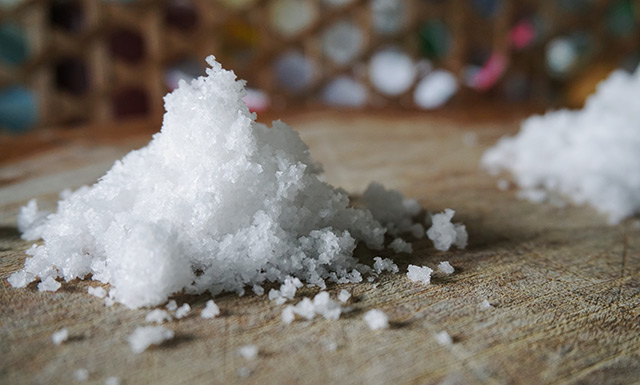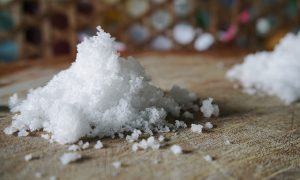
Glyceryl distearate sources, health risks
Thursday, November 02, 2017 by Jhoanna Robinson
http://www.naturalpedia.com/glyceryl-distearate-sources-health-risks.html

Glyceryl distearate has industrial uses such as building and construction materials, cleaning and furnishing care products, plastic and rubber products, and personal care products (cosmetics and skin and hair care). Produced from glycerol and natural fatty acids, it is also used as an emulsifier, anti-caker, preservative, and thickener in foods.
Glyceryl distearate is a white and sweet powder that is hygroscopic, which means it readily absorbs moisture from the air, preventing the formation of fat bloom on confectionery and truffles. It is the byproduct of the breakdown of fats, and is largely found in fatty foods.
Glyceryl distearate gives ice cream and whipped cream their texture. It serves as a protective coating for hygroscopic powders; a solidifier and control release agent in pharmaceuticals; an emulsifying agent for oils, solvents, and waxes; and a resin lubricant.

Harmful effects that can be caused by glyceryl distearate
If your eyes come into contact with glyceryl distearate, they will tear up and become red. Slight abrasive damage may also occur. There is actually very little amounts of medical literature when it comes to this compound, so if there are any instances when you need to have to ingest it, seek professional opinion regarding the drug first, before doing so.
Body systems supported by glyceryl distearate
Glyceryl distearate is bad for the digestive system. It bulks up stool to the point that it can cause temporary bloating and blockage of the esophagus and the intestine.
Glyceryl distearate is bad for the respiratory system. It can cause pneumonitis or pulmonitis, which is an inflammation of the lung tissue.
Where to learn more
Summary
Glyceryl distearate gives ice cream and whipped cream their texture.
If your eyes come into contact with glyceryl distearate, they will tear up and become red.
Glyceryl distearate is bad for the digestive and respiratory systems.
Sources include:
Tagged Under: Tags: glyceryl distearate





